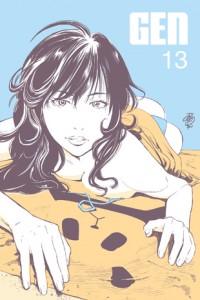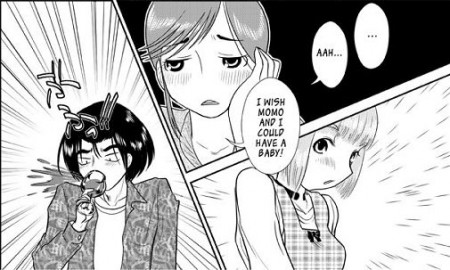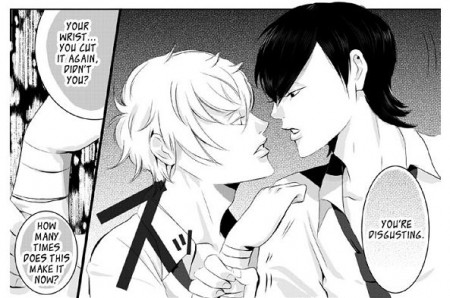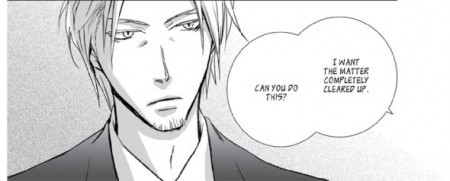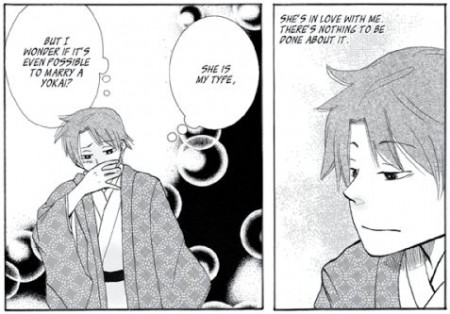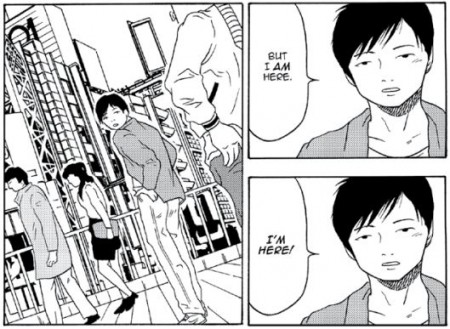GEN 13 Review
As the English language GEN indie manga anthology moves ahead into its second year of publishing, it starts with a brand new manga from a fresh artist, and it continues to provide readers an uncommon look into the pulsing heart of Japan’s manga industry. Rather than provide conventional manga, GEN delivers unique, original manga from amateur and underground Japanese artists, the grassroots creators at the heart of Japan’s manga art form. This is authentic Japanese manga as raw and fresh and unadulterated as it comes.
GEN issue 13 kicks off with “Psycho,” by creator Lumo. True to its name, this harrowing horror parable is terrifying but at the same time reveals its amateur roots. The debut chapter of the story introduces a future Japan that has reinstituted 19th century isolationism and seemingly been punished for its insularity by being stricken with a disease that mutates and devolves people in a variety of hideous ways. While the setting is provocative and some of the first chapter’s plot twists very impactful, “Psycho” suffers from its overzealous effort to incorporate too many different ideas too rapidly. The story is sci-fi yet alternates from sociological critique to satire to grotesque horror to action to drama at the drop of a hat. The story introduces a whirlwind of characters, frequently shifting perspective among them, forcing the reader to sometimes struggle to keep up with who the story is focusing on at any given moment. The story references several story arcs including a prologue in a neo-Yoshiwara district, a doctor struggling to cure the rampant disease, a social confusion over defining compassionate euthenasia, a mysterious monster hunter, a girl with a grim secret trying to escape from an unscruplous company out to exploit the disease. Even the graphic art seems a bit schizophrenic, shifting from a shounen art style to characteristic shoujo style to a horror style reminiscent of Shigeru Mizuki. “Psycho” shows promise, but only future installments will reveal whether its disparate elements will begin to gel and compliment each other.
Kosuke Kabaya’s “Android Angels” takes a step away from Mari and her cyborg butler Haru, with the sweet “Fruits Flavor” side-story set in the same universe but starring new characters that learn that romance is even more confusing in the future when the two traditional options of “man” and “woman” are expanded by “android.” As with “Psycho,” the graphic art in this month’s “Android Angels” story is a bit inconsistent, but the art does manage to consistently evoke the feelings it wishes to. The strength of the story lies in its narrative, which is interesting and a little bit provocative but stops short of getting heavily philosophical. The result is an enjoyable short tale that actually feels substantial.
Turning the page from the implied lesbianism included in “Fruts Flavor,” the third chapter of Love’s school romance story “One is Enough” establishes beyond any doubt that it’s an unabashed yaoi drama. The dialogue and narrative development in this chapter feel sappy and cliché, but the very fact that GEN dares to include an outright gay romance story is a welcome surprise and a good exposure to manga outside of conventional comfort zones for typical manga readers. Some liberal, stylized dialogue translation may seem odd, but it also contributes effectively to expressing the manga’s attitude of rebellious, hormonal teenage boys. The visual art is soft, warm, and attractive, and also tasteful; clearly suggestive but not crudely gratuitous.
The latest chapter of Isora Azumi’s “Stones of Power” begins a new story arc, this one shifting focus from café employee Fujita to café owner and spiritualist Ozaki. The narrative development in this new story arc is more conventional than the previous, but it develops effectively, with a palpable sense of growing unease. The graphic art is crisp, sharp, and easy to follow. The effective use of solid blacks and light screen tones creates an excellent atmosphere of contemporary style colored by a vague, ghostly sense of looming doom. While not groundbreaking, this chapter of “Stones of Power” looks, feels, and reads like skilled, refined manga typical of slick, corporate published magazines rather than bootstraps amateur doujinshi.
Nukuharu’s latest “Anomal” tale of the traditional Japanese supernatural continues GEN 13’s theme of unusual love, this time sweetening a creepy setting with a touching tale of love and sacrifice between a human boy with a cryptic power and a man-eating demon. The story and graphic art both evoke a slightly more lighthearted version of Yuki Urushibara’s Mushishi manga. The art has a whimsical playfulness that resembles a contemporary take on ancient Japanese woodblock art.
Hajime Taguchi’s manga examination of modern Japanese existentialism, “Alive” consists of three short tales this month. “Tokyo Desert” recalls the oddity of speculative European comics. The Twilight Zone-esque “The Invisible Man” continues to elaborate on the theme of modern Japan becoming a sterile, alienating, isolating world. “Pop” comes full circle, subtely illustrating the distances between even the closest contemporary Japanese relationships and returning to the type of intimate stories that characterized the earliest “Alive” tales. The graphic art, as usual, is sufficient, commendable more for its selection and inclusion of small, relevant details than for attractive design. But it’s the strong, insightful narrative that makes “Alive” so powerful.
As always, GEN 13 is absolutely accessible to new readers, but it’s a publication that, like manga itself, anticipates the intelligence of the reader. GEN expects that readers will have a basic familiarity with common Japanese terminology like honorifics and titles including “master” and “sempai.” Less common Japanese terms that need to be presented in Japanese for narrative effect are translated with footnotes. Sound effects are presented unaltered and untranslated, as is inconsequential background Japanese text. Although GEN isn’t necessarily oriented toward mature readers, authentic to its nature as underground manga, the stories presented deal with provocative, challenging, sometimes potentially offensive themes and imagery. GEN 13 includes some brief shots of graphic nudity, sex, and one instance of adult language, and unlike past issues, some mild bloody gore.
